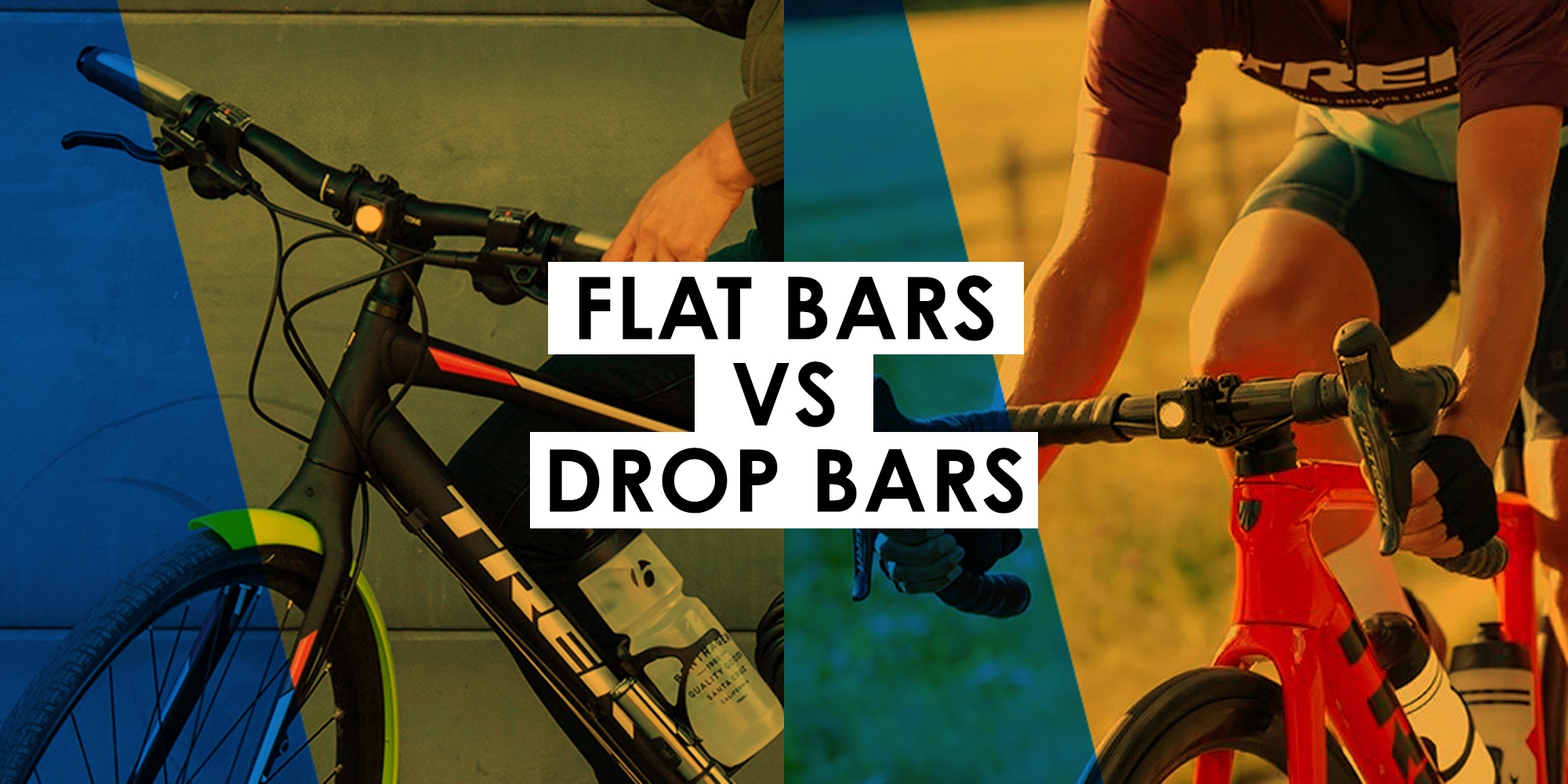Ever wondered about the difference between Flat bars vs Drop bars on bikes? Let us illustrate the difference. Here are the qualities of each—starting with Flat bars.
Flat Bars

TYPES OF BIKES: Hybrids, Mountain Bikes, Dual Sport
RIDING STYLE: Cross Country Mountain Bikes, Leisure, Fitness
Most bikes on the market are built with flat bars as they’re the most versatile and simplistic. The simplicity makes steering predictable and precise. The clean bar design allows the bike manufacturer to attach brake levers, shifters and riders can customize their experience further with accessories like lights, bells, cargo carriers, phone holders, and grips.
Flat bars are terrific for cross country mountain bikers because it allows the rider to lean forward towards the bar in a more aggressive position ideal for climbing, improving leverage and tire grip on rougher ground surfaces.
Riders using flat handlebars will enjoy more upright position (compared to drop bars or other bars designed for aggressive road riding). Hybrid and fitness bikes tend to be stocked with flat bars to maintain comfort on longer rides.
Drop Bars

TYPES OF BIKES: Road Bikes, Gravel Bikes, Vintage Bikes
RIDING STYLE: Road, Gravel
Popular bars among the more traditional bike enthusiasts due to its great looks and versatility. Typical drop bars have a straight middle section similar to a flat bar with each end curing downwards and towards the rider.
Riders have many options for hand placement on drop bars including on the flats (top part of the handlebar), on the brake hoods (most upright and neutral position, and easy control of braking/shifting levers), and in the drops (leaning down in a more aggressive position to reach the lower part of the handlebars).




